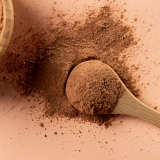What are the main uses of aluminium sheets in construction and architecture?

Aluminium has become one of the most versatile and reliable materials in modern construction and architecture. Among its many forms, aluminium sheets have gained remarkable popularity due to their strength, lightweight nature, and corrosion resistance. Across the globe—and particularly in regions like Singapore—architects and builders increasingly rely on aluminium sheets for both structural and decorative purposes. This rise in usage has also led to the growing prominence of suppliers providing quality aluminium sheet Singapore and Stainless Steel Singapore products to meet diverse industrial needs.
1. Aluminium Sheets in Modern Building Facades
One of the most common applications of aluminium sheets in architecture is for building facades and cladding systems. Aluminium sheets offer a sleek and contemporary look, which is ideal for modern buildings and skyscrapers. Architects prefer aluminium because it combines both aesthetics and performance—offering smooth finishes, durability, and resistance to harsh weather conditions.
In places like Singapore, where humidity and rainfall are frequent, aluminium sheet Singapore suppliers provide high-quality coated sheets that resist corrosion and maintain their shine for years. These sheets are often anodized or powder-coated, allowing designers to achieve a wide range of colors and textures that enhance a building’s exterior appeal.
Moreover, aluminium cladding helps protect the structure beneath from environmental damage while also improving thermal insulation. This dual benefit makes aluminium a top choice for energy-efficient and sustainable architectural projects.
2. Roofing and Ceiling Applications
Another significant use of aluminium sheets is in roofing and ceiling construction. Aluminium’s lightweight property makes it easy to install and reduces the overall load on a building’s framework. It is also resistant to rust, making it ideal for both residential and commercial roofing systems.
In modern architectural design, aluminium sheets are used for false ceilings, roofing panels, and soffits to give interiors a clean and sophisticated look. Their reflective surface enhances lighting efficiency by bouncing natural and artificial light throughout the space.
Many builders in Singapore choose aluminium sheet Singapore products for roofing because they can withstand heavy rain, humidity, and intense sunlight without warping or corroding. Aluminium sheets also come in various patterns, finishes, and thicknesses, allowing designers to customize structures according to their needs.
3. Aluminium Sheets in Doors, Windows, and Frames
Aluminium’s strength-to-weight ratio makes it ideal for fabricating doors, window frames, and curtain walls. In modern architecture, aluminium sheets are often used to manufacture sleek frames that can support large glass panels without adding excessive weight.
These sheets are easy to cut, shape, and mold, making them suitable for customized designs. They also provide superior insulation, ensuring that the building maintains comfortable indoor temperatures. This energy efficiency aligns with Singapore’s push toward sustainable architecture.
Stainless Steel Singapore suppliers often collaborate with aluminium distributors to provide a full range of metal construction materials that balance strength, corrosion resistance, and design flexibility. While stainless steel is preferred for structural support, aluminium sheets are used for aesthetic and lightweight components.
4. Interior Design and Decorative Features
Beyond structural uses, aluminium sheets have found a strong foothold in interior architecture. Designers use them for wall panels, partitions, decorative ceilings, furniture elements, and signage. The metal’s ability to take on various finishes—such as brushed, mirror, matte, or perforated—allows it to blend seamlessly with any design concept, from minimalist to industrial styles.
In Singapore, where interior spaces often emphasize clean lines and modernity, aluminium sheet Singapore options are highly sought after by interior designers. These sheets add a touch of sophistication while also being easy to maintain. They resist fingerprints, stains, and corrosion, which is perfect for high-traffic areas like offices, malls, and public buildings.
5. Use in Composite Panels and Sandwich Structures
One of the most innovative uses of aluminium sheets in architecture is in aluminium composite panels (ACP). These panels consist of two thin aluminium sheets bonded to a non-aluminium core, often made of polyethylene or mineral material. ACPs are lightweight, easy to install, and highly customizable, making them ideal for both interior and exterior applications.
Aluminium sheet Singapore manufacturers produce ACPs in a variety of finishes, including metallic, wooden, and marble textures, giving designers endless creative possibilities. These panels are commonly used for cladding, signage, and column covers in commercial complexes and airports.
Their smooth surface, weather resistance, and low maintenance needs make ACPs a long-term investment for modern architectural projects.
6. Sustainability and Eco-Friendly Construction
Aluminium is 100% recyclable, making it a sustainable material choice for architects and builders. In fact, recycling aluminium requires only about 5% of the energy used in primary production. This sustainability aspect has become a major factor driving its use in green buildings.
As Singapore moves toward eco-friendly urban development, the demand for aluminium sheet Singapore products that support energy efficiency and recyclability continues to grow. Aluminium’s ability to reflect heat also contributes to reducing cooling loads in buildings, further promoting sustainability.
7. Structural Components and Support Systems
While aluminium sheets are often used for aesthetic applications, they also play a crucial role in structural elements such as canopies, awnings, columns, and beams. Their high tensile strength ensures that they can handle substantial weight while remaining lightweight.
In combination with Stainless Steel Singapore materials, aluminium sheets help create hybrid systems that are both strong and visually appealing. Stainless steel is used for reinforcement and structural integrity, while aluminium adds a refined finish and reduces the overall weight of the installation.
8. Signage and Exterior Design Elements
Aluminium sheets are also widely used for architectural signage, nameplates, and decorative facades. Their smooth surface allows for easy printing, engraving, or painting, and their corrosion resistance ensures that outdoor signs remain intact for years despite exposure to the elements.
In Singapore’s urban landscapes, it’s common to see aluminium sheet Singapore signage in commercial buildings, transport hubs, and shopping complexes. The material’s versatility and modern look make it an ideal choice for professional, eye-catching exterior displays.
Conclusion
In today’s world of modern construction and innovative architecture, aluminium sheets play a vital role due to their flexibility, durability, and eco-friendly nature. From roofing and facades to interior designs and signage, aluminium provides endless creative and functional possibilities.

















